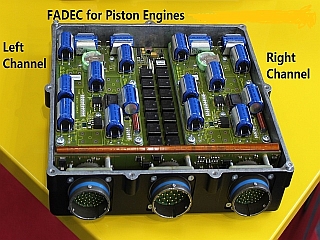|
Saturn AL-51
The Saturn AL-51, or fully the for the AL-51F-/ref> internal development designation ''izdeliye'' 30,The Russian term , Romanization of Russian, translit. ''izdeliye'' literally means "manufactured article" or "product". is an afterburning low-bypass turbofan engine being developed by NPO Saturn to succeed the Saturn AL-41F-1 for improved variants of the Sukhoi Su-57, as well as new potential tactical fighters such as the Sukhoi Su-75 Checkmate. Development In the 1990s, the collapse of the Soviet Union resulted in the disruption of funding and lengthy delays of the Mikoyan Project 1.44 for the MFI (''Mnogofunksionalni Frontovoy Istrebitel'', "Multifunctional Frontline Fighter") fifth-generation fighter program along with its engines, the variable cycle 18–tonne (177 kN, 40,000 lbf) class NPO Lyulka-Saturn AL-41F, internally designated ''izdeliye'' 20. In 1999, as the MFI and LFI programs were gradually being abandoned, the Russian Defence Ministry initiated ... [...More Info...] [...Related Items...] OR: [Wikipedia] [Google] [Baidu] |
WikiProject Aircraft
A WikiProject, or Wikiproject, is an affinity group for contributors with shared goals within the Wikimedia movement. WikiProjects are prevalent within the largest wiki, Wikipedia, and exist to varying degrees within Wikimedia project, sibling projects such as Wiktionary, Wikiquote, Wikidata, and Wikisource. They also exist in different languages, and translation of articles is a form of their collaboration. During the COVID-19 pandemic, CBS News noted the role of Wikipedia's WikiProject Medicine in maintaining the accuracy of articles related to the disease. Another WikiProject that has drawn attention is WikiProject Women Scientists, which was profiled by ''Smithsonian Magazine, Smithsonian'' for its efforts to improve coverage of women scientists which the profile noted had "helped increase the number of female scientists on Wikipedia from around 1,600 to over 5,000". On Wikipedia Some Wikipedia WikiProjects are substantial enough to engage in cooperative activities with outsi ... [...More Info...] [...Related Items...] OR: [Wikipedia] [Google] [Baidu] |
Ministry Of Defence (Russia)
The Ministry of Defence of the Russian Federation (; MOD) is the governing body of the Russian Armed Forces. The President of Russia is the Supreme Commander-in-Chief of the Armed Forces of the Russian Federation, Commander-in-Chief of the forces and directs the activity of the ministry. The Minister of Defence (Russia), Minister of Defence exercises day-to-day administrative and operational authority over the forces. The General Staff of the Armed Forces of the Russian Federation, General Staff of the Armed Forces executes the instructions and orders of the president and the defence minister. The ministry is headquartered in the General Staff Building (Moscow), General Staff building, built-in 1979–1987 on Arbatskaya Square, near Arbat Street in Moscow. Other buildings of the ministry are located throughout Moscow. The supreme body responsible for the ministry's management and supervision of the Armed Forces and the centralization of the Armed Forces' command is the National De ... [...More Info...] [...Related Items...] OR: [Wikipedia] [Google] [Baidu] |
NPO Saturn
UEC NPO Saturn, PJSC () is a Russian aircraft engine manufacturer, formed from the mergers of Rybinsk Motors and Lyul'ka-Saturn (after Arkhip Mikhailovich Lyulka) in 2001. Saturn's engines power many former Eastern Bloc aircraft, such as the Tupolev Tu-154. Saturn holds a 50% stake in the PowerJet joint venture with Safran Aircraft Engines. The company, founded by Pavel Soloviev, has its headquarters in the town of Rybinsk. History UEC Saturn was established in 2001, following the merger of Rybinsk Motors and Lyulka-Saturn. Rybinsk Motors was established on 20 October 1916 as the Russian Renault automotive plant. In 1917 it started producing aviation engines for the Ilya Muromets aircraft. The company was nationalized in 1918. Rybinsk was originally known as the Kolesov Engine Design Bureau. Kolesov took over the organization from V.A. Dobrynin who founded it in the late 1930s or early 1940s. Under Kolesov's direction, the bureau designed turbojet engines for the Myasishc ... [...More Info...] [...Related Items...] OR: [Wikipedia] [Google] [Baidu] |
Full Authority Digital Engine Control
A full authority digital engine (or electronics) control (FADEC) is a system consisting of a digital computer, called an "electronic engine controller" (EEC) or "engine control unit" (ECU), and its related accessories that control all aspects of aircraft engine performance. FADECs have been produced for both piston engines and jet engines. History The goal of any engine control system is to allow the engine to perform at maximum efficiency for a given condition. Originally, engine control systems consisted of simple mechanical linkages connected physically to the engine. By moving these levers the pilot or the flight engineer could control fuel flow, power output, and many other engine parameters. The mechanical/hydraulic engine control unit for Germany's BMW 801 piston aviation radial engine of World War II was just one notable example of this in its later stages of development. This mechanical engine control was progressively replaced first by analogue electronic engine contr ... [...More Info...] [...Related Items...] OR: [Wikipedia] [Google] [Baidu] |
Specific Thrust
Specific thrust is the thrust per unit air mass flowrate of a jet engine (e.g. turbojet, turbofan, etc.) and can be calculated by the ratio of net thrust/total intake airflow. Low specific thrust engines tend to be more efficient of propellant (at subsonic speeds), but also have a lower effective exhaust velocity and lower maximum airspeed. High specific thrust engines are mostly used for supersonic speeds, and high specific thrust engines can achieve hypersonic speeds. Low specific thrust engines A civil aircraft turbofan (with high-bypass ratio) typically has a low specific thrust (~30 lbf/(lb/s)) to reduce noise, and to reduce fuel consumption, because a low specific thrust helps to improve specific fuel consumption (SFC).{{Cite web, url=https://www.grc.nasa.gov/www/k-12/airplane/sfc.html, title=Specific Fuel Consumption, website=www.grc.nasa.gov, access-date=2016-04-25 This is usually achieved with a high bypass ratio. Additionally low specific thrust implies a relati ... [...More Info...] [...Related Items...] OR: [Wikipedia] [Google] [Baidu] |
Thrust-to-weight Ratio
Thrust-to-weight ratio is a dimensionless ratio of thrust to weight of a rocket, jet engine, propeller engine, or a vehicle propelled by such an engine that is an indicator of the performance of the engine or vehicle. The instantaneous thrust-to-weight ratio of a vehicle varies continually during operation due to progressive consumption of fuel or propellant and in some cases a gravity gradient. The thrust-to-weight ratio based on initial thrust and weight is often published and used as a figure of merit for quantitative comparison of a vehicle's initial performance. Calculation The thrust-to-weight ratio is calculated by dividing the thrust (in SI units – in newtons) by the weight (in newtons) of the engine or vehicle. The weight (N) is calculated by multiplying the mass in kilograms (kg) by the acceleration due to gravity (m/s). The thrust can also be measured in pound-force (lbf), provided the weight is measured in pounds (lb). Division using these two values still give ... [...More Info...] [...Related Items...] OR: [Wikipedia] [Google] [Baidu] |
Thrust Vectoring
Thrust vectoring, also known as thrust vector control (TVC), is the ability of an aircraft, rocket or other vehicle to manipulate the direction of the thrust from its engine(s) or motor(s) to Aircraft flight control system, control the Spacecraft attitude control, attitude or angular velocity of the vehicle. In rocketry and ballistic missiles that fly outside the atmosphere, aerodynamic Flight control surfaces, control surfaces are ineffective, so thrust vectoring is the primary means of Flight dynamics (fixed-wing aircraft), attitude control. Exhaust vanes and Gimbaled thrust, gimbaled engines were used in the 1930s by Robert H. Goddard, Robert Goddard. For aircraft, the method was originally envisaged to provide upward vertical thrust as a means to give aircraft vertical (VTOL) or short (STOL) takeoff and landing ability. Subsequently, it was realized that using vectored thrust in combat situations enabled aircraft to perform various maneuvers not available to conventional-en ... [...More Info...] [...Related Items...] OR: [Wikipedia] [Google] [Baidu] |
TASS
The Russian News Agency TASS, or simply TASS, is a Russian state-owned news agency founded in 1904. It is the largest Russian news agency and one of the largest news agencies worldwide. TASS is registered as a Federal State Unitary Enterprise, owned by the government of Russia. Headquartered in Moscow, it has 70 offices in Russia and in the Commonwealth of Independent States (CIS), "along with 56 global branches in 53 countries". In the Soviet period, it was named the Telegraph Agency of the Soviet Union () and was the central agency of the Soviet government for news collection and distribution for all Soviet newspapers, radio and television stations. After the dissolution of the Soviet Union, it was renamed Information Telegraph Agency of Russia (ITAR-TASS) () in 1992, but reverted to the simpler TASS name in 2014. Currently, on a daily basis TASS is "publishing nearly 3,000 news items in six languages and about 700 photographs and videos from correspondents in Russia and a ... [...More Info...] [...Related Items...] OR: [Wikipedia] [Google] [Baidu] |
Rossiyskaya Gazeta
' () is a Russian newspaper published by the Government of Russia. History ''Rossiyskaya Gazeta'' was founded in 1990 by the Supreme Soviet of the RSFSR, Supreme Soviet of the Russian SFSR during the ''glasnost'' reforms in Soviet Union, shortly before the Dissolution of the Soviet Union, country dissolved in 1991. ''Rossiyskaya Gazeta'' became official government newspaper of the Russian Federation, replacing ''Izvestia'' and ''Sovetskaya Rossiya'' newspapers, which were both privatized after the Soviet Union's dissolution. The role of ''Rossiyskaya Gazeta'' is determined by the Law of the Russian Federation N 5-FZ, dated 14 June 1994 and entitled "''On the Procedure of Publication and Enactment of Federal Constitutional Laws, Federal Laws and Acts of the Houses of the Federal Assembly''", by the Decrees of the President of the Russian Federation, dated 23 May 1996 No. 763, "''On the Procedure of Publication and Enactment of the Acts of the President of the Russian Federation, ... [...More Info...] [...Related Items...] OR: [Wikipedia] [Google] [Baidu] |
Fuel Efficiency
Fuel efficiency (or fuel economy) is a form of thermal efficiency, meaning the ratio of effort to result of a process that converts chemical energy, chemical potential energy contained in a carrier (fuel) into kinetic energy or Mechanical work, work. Overall fuel efficiency may vary per device, which in turn may vary per application, and this spectrum of variance is often illustrated as a continuous energy profile. Non-transportation applications, such as Industrial sector, industry, benefit from increased fuel efficiency, especially fossil fuel power plants or industries dealing with combustion, such as ammonia production during the Haber process. In the context of transport, fuel economy is the energy efficiency in transportation, energy efficiency of a particular vehicle, given as a ratio of distance traveled per unit of Motor fuel, fuel consumed. It is dependent on several factors including engine efficiency, transmission (mechanics), transmission design, and tire design. In ... [...More Info...] [...Related Items...] OR: [Wikipedia] [Google] [Baidu] |
Lyulka AL-31
The Saturn AL-31 (originally Lyulka) is a family of axial flow turbofan engines, developed by the Lyulka-Saturn design bureau in the Soviet Union, now NPO Saturn in Russia, originally as a 12.5-tonne (122.6 kN, 27,560 lbf) powerplant for the Sukhoi Su-27 long range air superiority fighter. The AL-31 currently powers the Su-27 family of combat aircraft and some variants of the Chengdu J-10 multirole jet fighter. Assembly of the engine is also performed under license in India by HAL, for the Sukhoi Su-30MKI. Improved variants power the fifth-generation Sukhoi Su-57 and Chengdu J-20. Development and design The design of the AL-31 turbofan began in the 1970s under the designation ''izdeliye'' 99The Russian term , translit. ''izdeliye'' literally means "manufactured article" or "product". by the Lyulka design bureau, also known as Lyulka-Saturn. With an emphasis on greater fuel efficiency over turbojets for longer range, the class turbofan engine was intended to power ... [...More Info...] [...Related Items...] OR: [Wikipedia] [Google] [Baidu] |




